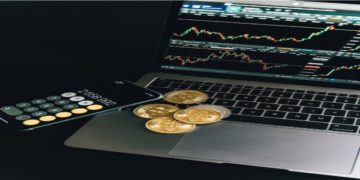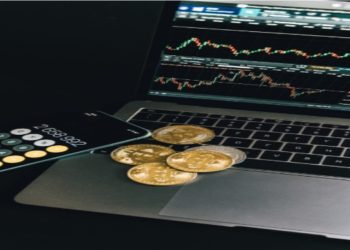Gold and other precious metals often attract traders who want stable assets during uncertain markets. Many see these metals as more than raw resources, viewing them as strategic investments. If you want to explore this market, it helps to learn about the top 20 trading indicators as laid out by Exness. By understanding how these indicators can guide your decisions, you can become more confident in your approach. Here’s a quick guide that should hopefully make you familiar with some of the top indicators as well as how to get started with precious metal trading.
Understanding the Basics
Many traders enter gold or silver markets because they hope to reduce their exposure to volatile assets. Precious metals often act as safe havens, meaning they hold their value when stocks or other assets drop in price. To navigate these markets, it is helpful to learn the most common signals used by technical analysts. At the heart of this process is the chart, which shows how price moves over time. Traders look for patterns that may suggest what could happen next. This approach may seem simple at first, but it can grow complex once you begin tracking several indicators together.
A common starting point involves the moving average. This line shows the average price of a metal over a set number of days. The line moves higher or lower as new price data enters the formula. Many traders watch the intersection of short-term and long-term averages. When the short-term average crosses above the long-term average, it might hint at an upward trend. When it dips below, it might signal that prices could drop. Although moving averages appear straightforward, they can help you spot both short-term swings and broader shifts in the market.
Technical Indicators to Explore
Another technical signal you might see is the Relative Strength Index, often called RSI. It measures whether a metal is overbought or oversold by looking at recent price gains and losses. When the RSI moves above a certain level, some believe the price may be due for a pullback. When it dips below that level, traders might think the asset is undervalued. For gold and other precious metals, the RSI can help pinpoint moments when the market momentum slows, which might lead to a change in trend.
You may also learn about the MACD, which stands for Moving Average Convergence Divergence. It takes two moving averages of different lengths and compares them, helping traders see when momentum changes. When these lines cross above or below each other, it suggests that the market’s behavior has shifted. Many traders look for these crosses to decide when to buy or sell. Though these lines on a chart can look confusing at first, you may find them to be reliable signals once you grow familiar with them.
Building a Solid Strategy
Before you begin, you might decide how you want to trade gold or other precious metals. Some people focus on spot markets, where they buy and sell the physical asset, or at least the digital representation of it. Others explore futures contracts, which allow them to speculate on a metal’s price at a later date. A few choose exchange-traded funds because these can track gold, silver, or platinum without requiring ownership of the metal. Each choice carries different levels of risk and potential reward.
Once you decide how to trade gold, it helps to define clear goals. Are you seeking a long-term store of value, or do you prefer to jump in and out of positions more often? When you know your aim, you can narrow the indicators you rely on. For instance, a swing trader who looks at short-term moves might pay more attention to RSI or MACD crossovers. A long-term investor might watch the weekly or monthly moving averages to see if the broader trend still appears positive. No single strategy fits all traders, so you might adapt your methods as you gain experience.
Managing Risks
Even the most well-researched plan can face surprises in the market. Sudden news events or policy changes can shift metal prices in unexpected ways. This reality makes risk management essential. You might decide to use stop-loss orders, which close your position if the price reaches a specific level. This type of order helps protect your trading capital if your forecast does not turn out as you hoped. You can also make sure you do not place too much of your portfolio into one metal. Spreading your funds across different investments is known as diversification, and it may help cushion any single loss.
It can be tempting to take on more risk when you see that a price is rising. If gold prices climb fast, traders may add larger positions, hoping to amplify their returns. In many cases, though, a cautious approach proves more sustainable over time. Each new position should still follow your core trading rules, including position size and planned exit points. Even if you trust the signals from your indicators, it is wise to confirm them by checking if overall market conditions support your thesis.
Refining Your Approach
Many new traders think they must master every indicator before placing a trade. In truth, it may be more useful to test a few basic signals and see how they perform for you. When you grow more comfortable, you can add other indicators to refine your analysis. Consistency often matters more than complexity. Watching how one or two signals behave under real market conditions can reveal more than juggling several complex formulas. Over time, you may notice which patterns repeat and which signals feel reliable.
Traders also learn from keeping a record of trades. This approach involves writing down why you entered a trade, how you applied your indicators, and the outcome you achieved. This journal-style record helps you track mistakes and discover how to improve. You may spot patterns in your decision-making, such as taking unnecessary risks when you feel confident or closing profitable positions too soon. Recognizing these tendencies gives you a roadmap for change.
Wrap Up
Learning how to interpret trading indicators for gold and other precious metals can be a valuable skill to make money online if you approach it with patience and consistency. It helps to focus on well-known signals like moving averages, RSI, and MACD before experimenting with more advanced tools. By sticking to a structured strategy and managing your risks, you can enhance your chances of success in this sometimes challenging market. Each step you take builds your confidence as you observe how metal prices move. Over time, you might refine your tactics until you find a style that aligns with your goals.
David Prior
David Prior is the editor of Today News, responsible for the overall editorial strategy. He is an NCTJ-qualified journalist with over 20 years’ experience, and is also editor of the award-winning hyperlocal news title Altrincham Today. His LinkedIn profile is here.













































































